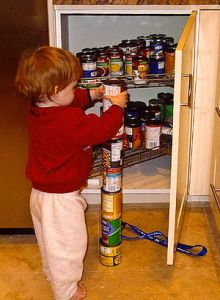The Diagnostics Of Autism And Aspergers Syndrome
Today, when I thought about writing this post I had this strong urge to kick my own arse, as I asked myself the question… “Why haven’t I written this post already”
The Facebook page is now reaching numbers of 5,000 + and although that’s great, it still shows how many more children are being diagnosed as being on the autism spectrum, that or the high numbers of parents seeking a diagnosis and therefore seeking out advice on something they long to understand…. “The Diagnostics of autism”
This basically means the different tests and routes undertaken in-order to diagnosis a child as being on the autism spectrum, and it’s this I want to write about here today.
Firstly I should make it crystal clear that there is no set procedure, some places, areas, and countries do it differently to another. However, the most important thing to remember before delving in any further is, “One child may be diagnosed in record time, another it may take longer, one child may only see two professionals whereas another…. they may meet hundreds!
I’m situated in the United Kingdom and my son, now 11 years old, was formally diagnosed in early 2009 as having ‘Asperger’s Syndrome’
One of the common misconceptions made by parents (including myself) is when a child psychologist informs you that your child is indeed on the autism spectrum… you then understandably think you’re a child was just diagnosed! Com-on, why the hell wouldn’t you, he just sat there and said it didn’t he? Your child normally isn’t actually diagnosed and normally it will be a while till they actually are. I remember being told on my first visit, Little man was most likely on the autism spectrum with Aspergers Syndrome being the most appropriate title! Yes, he rambled on about coming back on this date to have this elevation & that observation done, but he said it… I bloody heard him! Your child isn’t technically diagnosed till them words hit paper, that’s when it matters, that’s when it counts and means anything to schools and services in your local area! I learned this the hard way, Little man’s mainstream school wrote it off completely, they proceeded to do sod all, that was in-till they saw it there in black & white some two years later! Remember it’s not always so long, actually, it should never be this long! We had problems with certain doctors and the school’s input didn’t help, we actually had to re-enter the waiting list when the person taking care of Little man’s notes was dismissed, meaning little man was missed completely. Anyhow… My point… when there is still testing to be done and you don’t yet have that paper with the title of any diagnosis, then the likelihood that you actually don’t have one yet… Is, well… quite certain!
Below I’ve posted some of the diagnostic tools you may come across if your child is being assessed for an autism spectrum condition or Aspergers Syndrome.
Aspergers Syndrome Diagnostic Scale (ASDS)
The diagnostic tool used on those between the ages of 5-18 years old as a diagnostic tool.
Method: Parent/teacher questionnaire made up of 50 questions which are rated and therefore indicate the presence or absence of behavior mostly associated with Aspergers. The scores give the tester an indication on the probability of a diagnosis of Asperger’s syndrome. This is a diagnostic tool, though it’s rarely used alone when diagnosis a child with Aspergers The above test was one of the tools used for Little man’s diagnosis.

Image via Wikipedia
Autism Diagnostic Interview-Revised (ADIR)
This is a diagnostic tool used on children aged over 2.
ADIR is a structured 90-minute interview consisting of 93 items split into three functional domains. The responses given are then coded in 8 areas.
The test is to look for the early developmental signs of autism spectrum conditions including a child’s Speech and language, the way they communicate and interact, repetitive and stereotyped behaviours and intense interests. (This is another test performed on little man).
Autism Diagnostic Observation Schedule (ADOS)
This is a diagnostic tool usually used from the ages of 2+ (commonly used on adults as well as children) professional play-based observation done on an interactive format (child/clinician)
The test is used to assess the child’s social communication & interaction skills, imaginative play or creativity, stereotyped behaviours, and restricted interest. It was the ADOS that finally lead to Little man’s formal diagnosis.

Image via Wikipedia
Childhood Autism Rating Scale (CARS)
A diagnostic tool for children over 2 years.
The test consists of 15 items rated on a 7 point scale. These items are made up from parental input/questionnaire clinician observations, other related reports and input (educational reports etc) A wide spectrum of behaviours are assessed including those above and more. The test will establish three possible outcomes… not autistic, mildly/moderately autistic or severely autistic.
Gilliam Autism Rating Scale-Second Edition (GARS-2)
A diagnostic tool usually used in those between the ages of 3-22 years of age. It consists of 3 sub-scales based on observation of frequency of behaviours such as stereotype behaviours, interaction, and communication, of occurrence and parental interview
Diagnostic Interview for Social and Communication Disorders (DISCO)
A diagnostic tool used for diagnosing children/people of all ages. This is a semi-structured interview schedule lasting some 3 hours with parents, other caregivers, which is mainly used in assisting the diagnosis of autism.
Discover more from Autisable
Subscribe to get the latest posts to your email.






